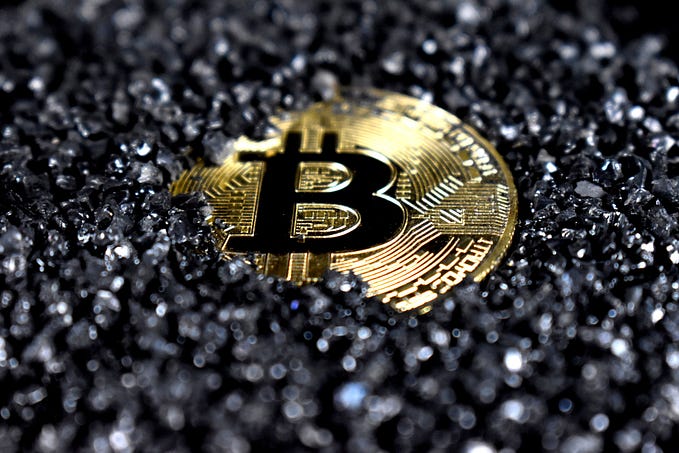Money After Bretton Woods: Policies Without Long-term Solutions
You’re reading Part III in Ramifi’s series on inflation. Want the full story? Check out Part I: World Reserve Currencies (TL;DR? Here’s a thread) and Part II: The Rise and Fall of Bretton Woods.

Farewell Bretton Woods
Our last article explored how the United States dollar stepped into the world’s reserve currency role. With the United States controlling over 70% of the planet’s gold reserves and emerging from the Second World War relatively unscathed, the shift made sense at the time.
Dollars are fungible, pay interests on reserves, and are more fungible than gold. However, the main selling point to the global economy was redeeming dollars for gold at a stable rate of $35 per ounce. This stable peg remained consistent for decades. Due to this commodity peg, inflation remained relatively subdued until the 1970s.
Today we’ll examine how inflation exploded in the years following Bretton wood’s collapse. This inflation gave rise to a financial race to the bottom as economies worldwide competitively devalued their currencies.
Central bank cooperation eventually ruled the day, seeing coordinated fiscal policies that mostly reigned in extreme inflation that plagued the 1970s and early 1980s. However, those policies set into motion continued monetary debasement on a global scale.
So Long, Gold — Hello, Forex
In the early 1970s, the gold peg went the way of the dinosaur, and the dollar became a full-fledged fiat currency. This shift left the dollar unbacked by anything other than the full faith and credit of the United States (a bureaucratic pinky-promise).
Subsequently, nations worldwide moved from a fixed currency peg against the dollar to free-floating exchange rates. Rather than governments moving the value of their currencies up or down relative to the dollar, the open market would decide how much respective national currencies were worth. A monetary free-for-all soon followed.
Free-floating exchange rates are far more volatile than currency pegs.
The shift to free-floating rates had a massive impact on the global economy. Dubbed the Nixon Shock, the dollar’s value initially collapsed as other nations scrambled to stabilize their trade balances. With no tangible commodity backing international currencies, volatility was rampant as price discovery between currencies took time to stabilize. The foreign exchange, or Forex markets, sprang to life as trading between global currencies became a crucial aspect of the new financial reality.
Printing Press Solutions
The financial arms race created a unique problem — exporting economies could only remain competitive by keeping their currencies weak relative to the dollar. Economies worldwide began to print massive amounts of currency to assure that ample supply would keep their currency values low and remain competitive on the world stage. The only way to stay competitive was to out-print the dollar.
The dollar’s initial plunge quickly shifted to a meteoric rise, with valuations soaring by 50% relative to other currencies between 1980 and 1985. With the dollar now free of commodity backing restraint, dollar printing accelerated. The average USD inflation rate was 6.8% throughout the 1970s, more than double the average of previous decades. Worldwide inflation ballooned.
USD inflation often topped 10% throughout the 1970s
The Plaza Accord
The dollar’s soaring value was a challenge for world economies, but it was excruciating for the United States manufacturing sector. With the dollar’s cost at all-time highs, US manufacturing couldn’t compete against other nations — and they weren’t happy. While the US financial industry could profit heavily from the meteoric dollar rise, the working class could not compete internationally.
By the mid-1980s lobbying efforts pushed by US farmers and manufacturers were successful enough to see congress attempt to pass protectionist policies. The prospect of returning to a heavily tariffed international market left global economists anxious- the purpose of the dollar as the world reserve currency was to solve the issue of economic warfare. Leaders had to do something.
In 1985 the world’s leading economies came together in New York in what is now known as the Plaza Accord. The world’s major economies of Britain, France, West Germany, and Japan struck an agreement to coordinate to strengthen their currencies relative to the dollar.
That meeting was the first time that global central bankers coordinated policy and marked the rapid rise of financial globalization. This tenuous cooperation has held steady since the Plaza Accord agreements. A successive meeting occurred in 1987 known as the Louvre Accord, in which the world’s six largest economies reaffirmed their positions.
The Plaza and Louvre Accords successfully depressed the dollar’s relative value. Still, they did little to stem the tide of global inflation.
Cooperation, But No Solution
While global central bank cooperation smoothed out some of the rougher edges of a fiat reserve currency, these institutions have still failed to address their stable prices mandate. The dollar has lost over half of its purchasing power since the Plaza Accord in 1985. Such a collapse in value demonstrates how the following global financial policies have rendered anything but a stable global economic environment.
Absent a commodity backing, the world reserve currency has accelerated its inflation rate, taking the global economy along for the ride. While the United States doesn’t hold full responsibility for this gross financial mismanagement, the dollar’s role in the global financial system has certainly accelerated inflation. Keeping the status of a world reserve currency is itself a type of curse.
The rise of synthetic commodities like Bitcoin will aid in staving off the tide of inflation and backing for future monetary regimes. Inflation will only continue to rise, and Ramifi will serve as an invaluable tool to hedge against fiscal fallout.
Ramifi Protocol is a synthetic commodity tool that accurately tracks dollar inflation in real-time, allowing users to hedge as they see fit. #TestNet soon.
In our next article, we’ll explain how inflation will continue to accelerate, eventually reaching the pace of hyperinflation, likely on a global scale. Central bank interventions are seeing diminishing returns, and a new international monetary regime is in order. However, the road to this new regime will very likely be a tumultuous one.








